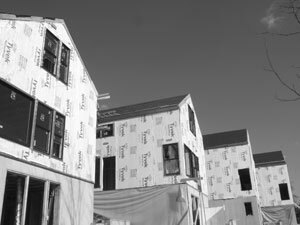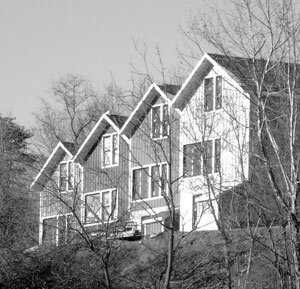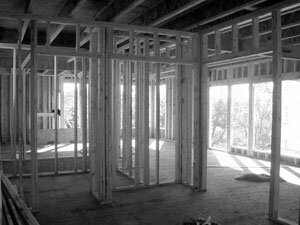REAL ESTATE- ON THE BLOCK- </span>Druid yourself: Helping buyers catch their breath<span class="s1">
ADDRESS:1012 Druid Avenue
NEIGHBORHOOD: Belmont
ASKING: $495,000
CITY ASSESSMENT: n/a
YEAR BUILT: 2006
SIZE: 2640 fin. sq. ft.
LAND: 0.5 acre + common area
CURB APPEAL: 8 out of 10
LISTED BY: Sue Plaskon of Real Estate III
In 1993 the American Lung Association issued guidelines to establish Health House standards. Prompted in part by the rising incidence of people afflicted with asthma and other respiratory problems, Health Houses have been designed to insure the cleanest possible indoor air flow. The Environmental Protection Agency claims that indoor air contains two to five times as many pollutants as outdoor air and that air quality is one of the top five most urgent environmental risks to public health. Considering that most people spend almost 90 percent of their time indoors, the potential hazards are frightening.
Enter Dale Abrahamse of Abrahamse and Company. A builder for over 30 years in Albemarle County and Charlottesville, he's seen his share of the vagaries unique to his profession. In 2004, he became interested in Health Homes and contacted the American Lung Association to take a training course enabling him to construct such homes according to the association's specifications.
A glimpse of the houses from the road reveals nothing unusual. Beautifully situated on a small knoll and painted in rainbow hues, all five of the houses fit right in to the funky hodgepodge that has become Belmont. Beyond that, any similarity to a developer's business-as-usual construction ends. The houses are at various points of completion, with the last one slated to be market-ready in March 2007.
The list of materials used to conform to with Health Home guidelines reads to us like a chemistry exam to a Shakespeare scholar. The foundation is a Superior Walls system with warranties for 15 years against side wall water penetration, defects in workmanship, and for a "lifetime" against freeze/thaw cycles and water vapor transmission. Walls are insulated with soy oil-based polyurethane spray-in-place foam; interior paint is zero VOC latex; cabinets meet HUD formaldehyde emission standards; and all exterior wood is borate pressure-treated southern yellow pine. All this is presumably is fantastic news to people who care about such things.
The fireplace will be a direct-vent, sealed-combustion, natural-gas unit with brick refractory liners, all the water will be treated with a charcoal filter, and the indoor air quality will be maintained by a ducted dehumidifier capable of keeping humidity lower than 50 percent year round (necessary to keep mold, fungus, and bacteria at bay). The list goes on.
But like any complex system– whether it be the human body, a computer, or a health home– it's still the packaging that initially catches the eye. And these houses do not disappoint. The Planned Urban Development will be subject to a Homeowners Association that will take care of the communal area (leaf blowing, snow removal, etc.). Although each house is a carbon copy of its neighbor, the elevated site as well as window placement ensures a degree of individuality for each occupant.
These particular homes have also been designed for easy access for people with problems of mobility. There are no step entrances, and door openings on the first level are wide enough to accommodate a wheelchair. A bedroom and full bathroom can be modified for full accessibility.
Architect Andy Thomas has created an unusually large amount of space, fitted to a wide variety of living arrangements, in a relatively small house. The potential space outlined in the current plans calls for five bedrooms and four bathrooms. In case one gets nervous thinking a bedroom might house the dining room table, included also in the floor plan is an office, rumpus, and loft space.
More than anything, the houses feel right. Some quality without a name pervades every corner. Perhaps the design has something to do with it, or the quality and enthusiasm of the builders– maybe even the feeling that an asthmatic child or an ailing grandparent could live here peacefully without the threat of dreaded toxins invading precious breathing space.
Having already exceeded the standards designed by the American Lung Association as well as those set by EarthCraft and Energy Star, these houses are primed to mark a turning point for Charlottesville. As the first Health Homes in Virginia, we may start a trend. If these houses are any indication, Abrahamse and Company are leading the way.



Photos courtesy of the agent
#
1 comment
Interested in the American Lung Association Health House program? Learn more at our website:
www.HealthHouse.org